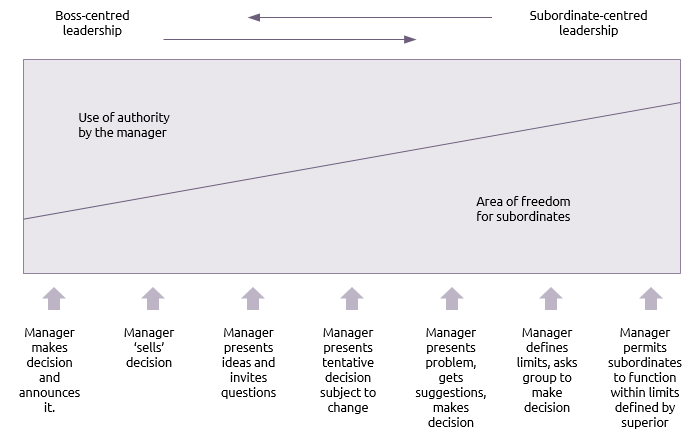Robert Tannenbaum and Warren Schmidt first published their views on leadership styles in 19581 and updated their model in 19732.
The model focuses on the delegation of authority from a manager to the team. The original 1958 model is shown below and while the language of ‘subordinates’ and ‘superiors’ reflects its age, the principles hold true.

The model shows a continuum starting from a situation where the manager holds on to all authority, dictates what tasks need to be done and when. This approach progresses through various phases of increased consultation and delegation to one where the manager delegates most of the authority invested in them to the team.
Many use this as a model of the developing relationship between a manager and the team and it resonates with models of leadership and teamwork such as Hersey & Blanchard and Tuckman.
But in the narrow context of the P3 manager’s need to delegate authority it needs to be looked at slightly differently.
Sometimes it is advantageous for the manager to develop a team by encouraging them to take decisions and accept authority for those decisions. It may also be necessary for the manager to simply define a task and allocate it to a team, albeit with well communicated and SMART objectives.
The value in studying this model for a P3 manager is in understanding the continuum and selecting the right level of delegated authority in different contexts.
- Tannenbaum, R. & Schmidt, W., How to Choose a Leadership Pattern, Harvard Business Review March-April (1958)
- Tannenbaum, R. & Schmidt, W, How to Choose a Leadership Pattern, Harvard Business Review May-June (1973)





